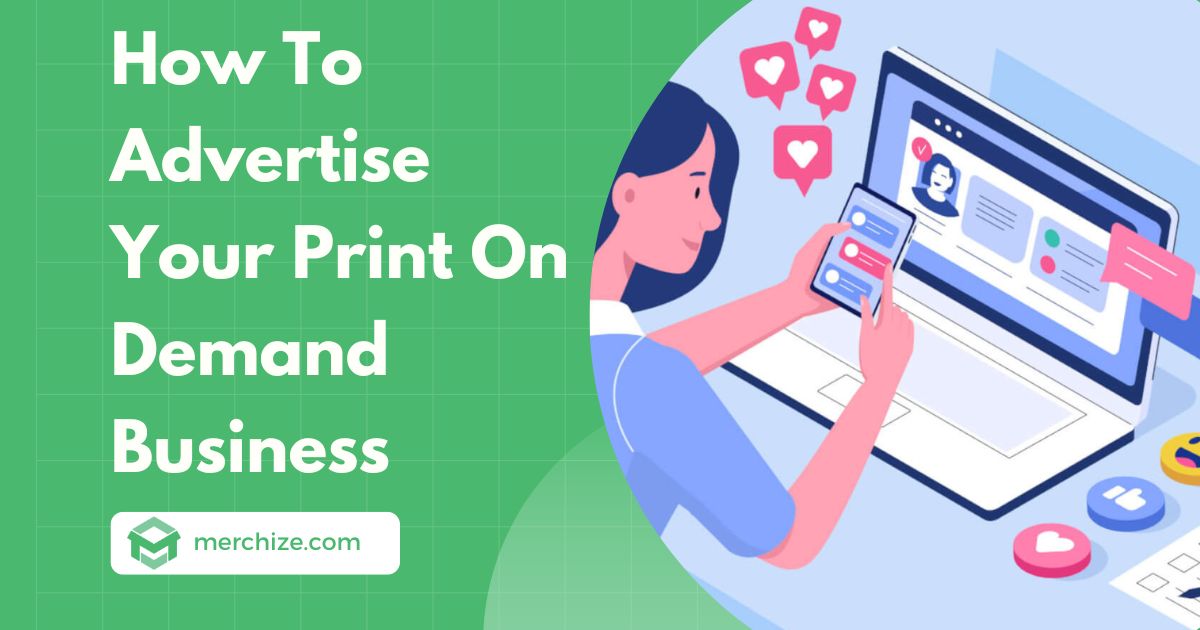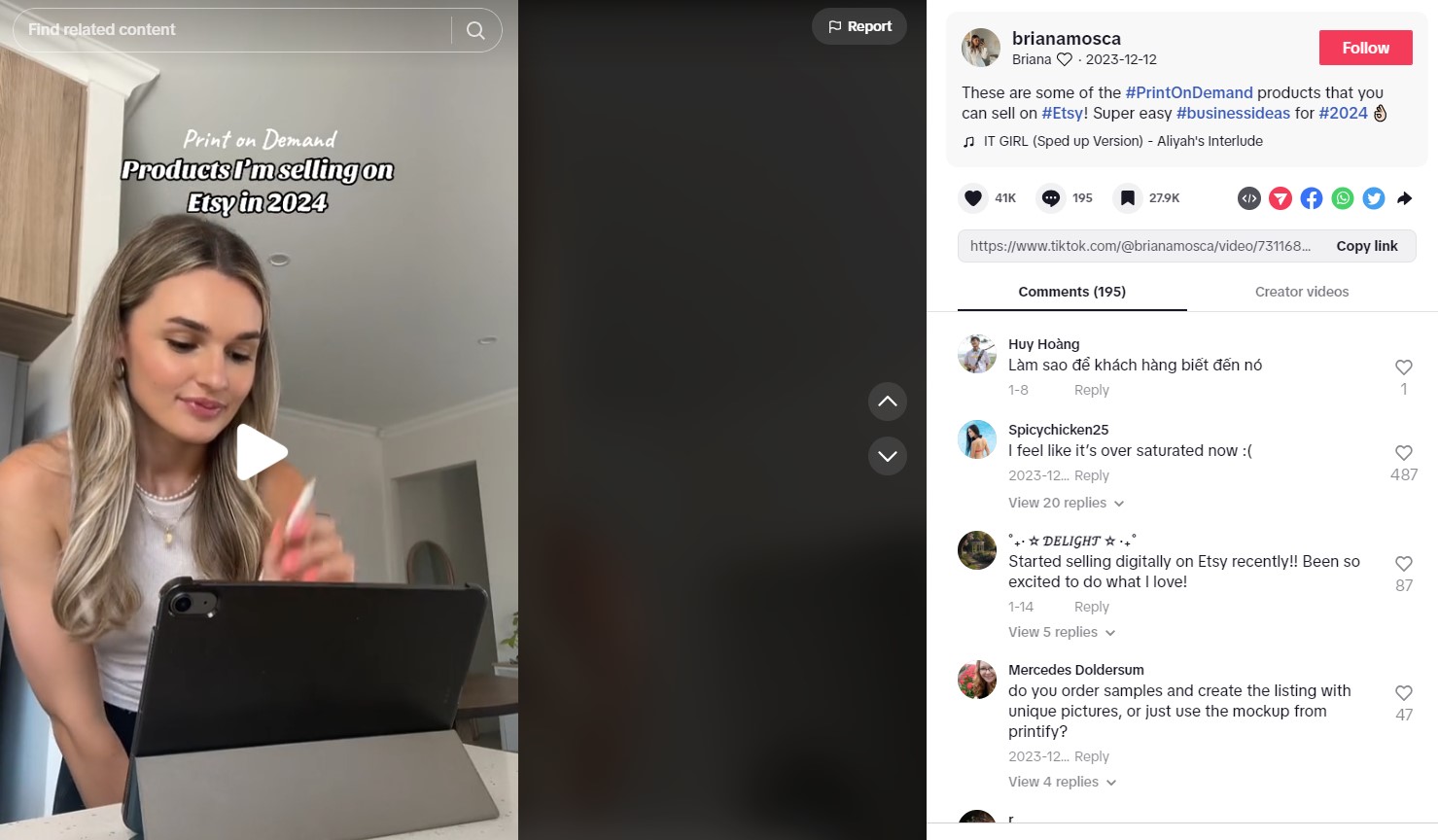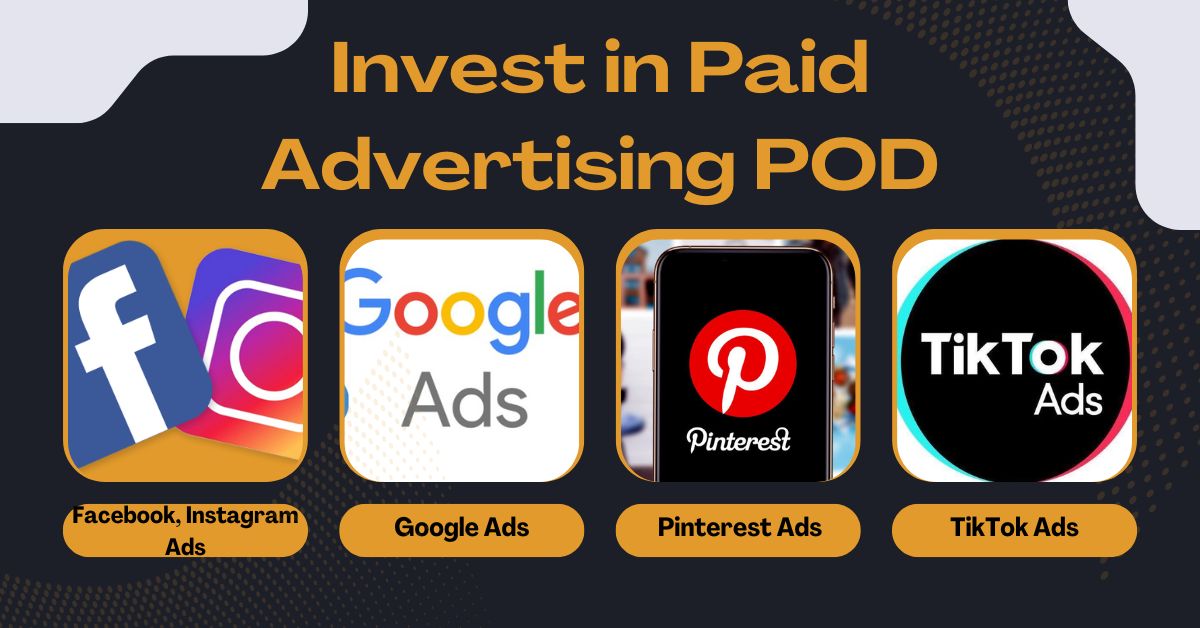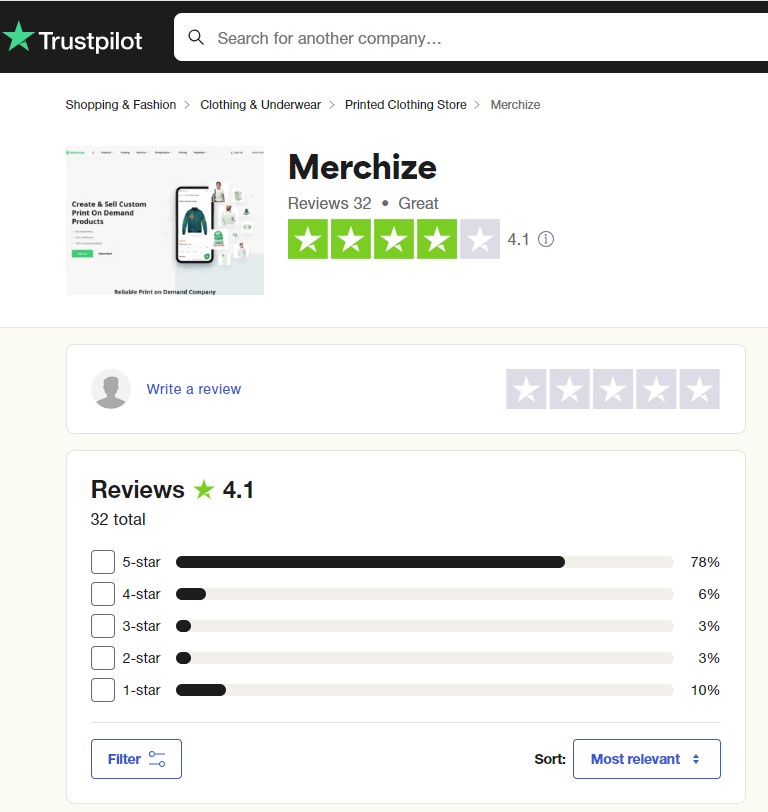Contents
- Try to Come Up With a Unique Niche
- Understand Your Target Audience
- Leverage Social Media Marketing
- Embrace Influencer Marketing
- Optimize for Search Engines
- Invest in Paid Advertising
- Build an Email List and Nurture Relationships
- Reviews and Testimonials
- Participate in local and community events
- Create a Business Profile on Google
The Print on Demand market is booming, on track to reach USD 45.6 billion by 2031. Even so, the competition between new and old stores is still extremely fierce. In this article, we will show you 10 ways to popularize advertise your Print On Demand business and apply it to successful entrepreneurs. Whether you’re a seasoned business veteran or just starting out, we hope you’ll learn something from this guide.
Try to Come Up With a Unique Niche
In the saturated print-on-demand marketplace, defining your niche is paramount to stand out. The right niche will target a specific audience and cost you less effort, time and money than broad topics. For example, you can choose a niche that specializes in print on demand for pets, hobbies, cultural phenomenon, careers, etc. This avoids rambling and helps customers easily choose and find suitable products with them.
Based on market research, competitor research, and industry competition, I’m sure you will find a suitable niche. Not only will a niche store build authenticity and community faster, but it also yields better conversion rates from an audience seeking those specialized products. Let your niche focus shine through in branding, product offerings, messaging, and marketing. Meet the needs of an underserved niche audience for the most effective print-on-demand promotion.
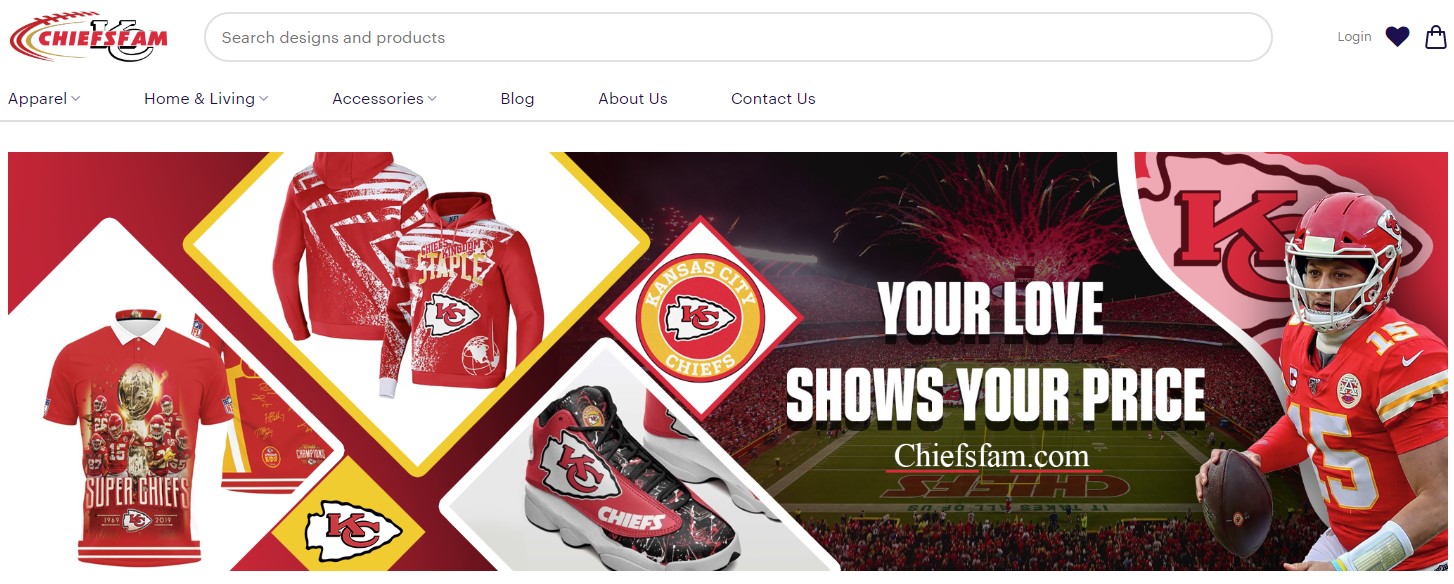
Understand Your Target Audience
To know oneself is true progress. Conduct in-depth market research to unveil your ideal customer’s defining characteristics, interests, values, and pain points. For example, TikTok is most popular among Gen Z users in the US, while 25 to 34-year-olds make up the largest segment of Facebook’s audience.
Explore tools like online SurveyMonkey, Semrush, Google Trends, Facebook Audience Insights, BuzzSumo, Similarweb, … to accurately analyze demographics. Key insights to uncover include age, location, gender, income level, purchasing habits, media consumption, motivations, and more. The more precisely you can profile your perfect audience, the better.
Examples of Demographic Market Segmentation may include:
- Segmentation by age: Divide the market into groups such as children, teenagers, middle-aged people and the elderly to market appropriate products according to each age group.
- Segmentation by gender: Separating product and service lines for men and women.
- Segmentation by income: Classify customers based on income level to develop basic to advanced products and offer pricing policies suitable to the paying ability of each market group.
Continuously gather feedback and analyze around your audience as you advertise. Consistently refining your customer avatar is instrumental for advertising optimization over time. Let your audience’s voice shape every branded touchpoint.
Leverage Social Media Marketing
Social media platforms like Facebook, Instagram, Twitter, TikTok, Pinterest, and LinkedIn have billions of active users, providing an excellent opportunity to reach potential customers for your print-on-demand business. Here are some tips on how to effectively leverage social media marketing:
Choose the right platforms
- Facebook: With 2.7 billion monthly active users, Facebook has the largest user base. It’s ideal for local businesses looking to engage with customers through organic posts, paid ads, groups, stories, reels, messenger bots, contests and influencer marketing. The algorithm prioritizes posts that spark conversations and generate meaningful interactions between users.
- Instagram: Instagram’s 1.5 billion monthly users skew younger (under 35) and engage at high rates, making it great for admitting products and driving mobile purchases. Use eye-catching visuals, relevant hashtags, stories, reels, and insights to optimize your strategy.
- TikTok: TikTok’s 1 billion mostly Gen Z users engage heavily with creative short-form video content. It’s ideal for building brand awareness through entertaining, viral content and influencer partnerships.
- X (Twitter): Twitter’s 436 million users treat it as a news source and is the most popular social network in America. Using high-quality product images and compelling captions to drive traffic to your store and sales from X is very high.
- LinkedIn: LinkedIn’s 830 million users are highly educated professionals, making it ideal for B2B print-on-demand like custom corporate gifts. Share industry insights and company news. The algorithm filters out spam/low-quality content.
Create engaging content
With just a few simple steps you can create high quality content that boots your sales easily. Check out these pro tips for creating fire content.
- Captions & Headlines: Hook your audience with a solid caption or headline. Keep it short and sweet – around 15 words max. Ask a juicy question or drop some emoji to spice it up.
- Emoji: Emoji aren’t just cute – they can seriously boost engagement. But don’t go emoji crazy or you’ll look thirsty. Sprinkle them in to add tone or highlight key points.
- Call to Action: Always end your post by asking your followers to do something – comment, share, vote, sign up. Even just dropping your link gives them somewhere to click. Don’t be shy about asking for the sale!
- Mentions: Shout out other brands, creators, or influenced to show some love and hopefully get a repost. Plus the algorithm gods might show your content to more peeps. Win-win.
- Hashtags: Hashtags make your content searchable and help it trend. Mix brand tags with popular threads like #MondayMotivation or community tags like #SmallBusinessOwner. Check what’s popping before you post.
- Visuals: Pictures and videos turn eyeballs into engagement. Play around with different types of images and clips to see what your audience vibes with most. Pro tip: make text easy to read if you add words.
- Repurpose Old Content: Why reinvent the wheel? Raid your camera roll, blog posts and old campaigns for stuff you can refresh and reuse. Modernize an old blog post into a tweetorial, or turn a webinar into Instagram Reels. Get creative!
- Analyze and adjust: Regularly analyze the data from your campaign performance and make adjustments to your overall social media marketing strategies based on data-driven insights. The detailed analytics available allow you to see clearly what is working and what’s not, enabling you to double down on high performing content and pivoting when necessary. Continual testing and optimization based on performance data is key to success.
Embrace Influencer Marketing
Teaming up with relevant influencers can be a super effective way to get the word out about your print-on-demand goods. Research shows it helps companies earn an average $6.50 return for every $1 spent. Most see nice returns, some as high as $20 back for each buck.
We’d suggest connecting with “nano" and “micro" influencers in your niche. Even though they have smaller followings, their fans really trust them and engage with their content. An authentic shoutout from someone with 50k truly devoted followers can outperform a big name celebrity sponsorship any day.
When picking partners, dig into their engagement rates, content quality, aesthetics, and audience demographics. Make sure they are related to your products and services. If you sell music products, choose partners who are singers or people who specialize in cover music, for example. Compensate them by providing free products, setting up affiliate programs, or paying sponsorship fees in exchange for dedicated posts showcasing your work. Supply some freebie items too so they can organically integrate them into other content as well.
Keep an eye on performance by monitoring website traffic, engagement, conversions and sales from sponsored posts. Optimizing based on what content resonates most can take your influencer program to the next level. It’s a cost-effective way for print-on-demand shops to get their designs seen by excited, potential customers.
The key is being selective with your partners. But when done thoughtfully, influencer marketing can deliver fantastic growth!
Optimize for Search Engines
Search engine optimization (SEO) is a way to sell products naturally without paying for SERP platforms (Google, Bing, Coc Coc, Facebook Search…) and is a potential channel for specialized POD companies. Here are some key strategies to optimize your website for search engines:
- Conduct keyword research: Use tools like Google Keyword Planner, MOZ, and Answer the Public to identify relevant, high-volume keywords that your target audience is searching for. Keywords are considered the skeleton of the store, a complete set of keywords including category keywords, product keywords, blog keywords,… Try to write all content containing keywords related to your niche.
- Optimize your meta tags: Include your primary keywords in your meta title (55-60 characters) and meta description (140-160 characters). Make sure they accurately describe your page content and entice users to click through from the search results.
- Use header tags effectively: Structure your page content with appropriate header tags (H1, H2, etc.). Article titles contribute 70% of a content’s success, explosive titles will pull readers down the content, making them want whatever you are saying or talking about.
- Create unique, high-quality content: Write compelling, original product descriptions and blog posts that naturally incorporate your target keywords. Put yourself as the customer and write value for the customer. In particular, the content must meet E-E-A-T (Experience, Expertise, Authoritativeness, Trustworthiness) to help Google see that your website is trusted and the website ranks “speedily" on SERPs.
- Optimize images: You should use clear, real images to post product photos and blogs. At the same time, use images that are closely related to the article content and the content of the keywords users search for. In particular, photos in blogs should have photo captions so that Google and readers can clearly understand the information inside the photo.
- Build internal and external links: Link to other relevant pages within your website to help search engines understand your site structure and distribute link equity. Backlinks are a ranking factor in SEO, pages with high quality backlinks tend to achieve high rankings in SERP.
- Leverage social media: Businesses often insert sharing buttons in websites and blogs to encourage visitors to share on social networking sites when attracted by valuable content. Thanks to that, quality and useful articles can reach diverse readers on Social channels. The brand is well known and the content is marketed effectively.
- Ensure technical SEO is in order: Optimize your website’s loading speed, mobile-friendliness, core web vitals and security. A beautiful, easy-to-access website suitable for all mobile devices makes customers’ time on site longer.
SEO is a long-term path to attracting print on demand customers, be persistent in optimizing your store for at least 6 months to achieve the first results.
Invest in Paid Advertising
Investing in paid advertising is very important for new print on demand businesses to promote their brand and reach a wider audience. Platforms like Facebook, Instagram, Pinterest, Google and TikTok offer unique opportunities to showcase your products and drive sales. Here’s how you can leverage paid advertising on these platforms:
Facebook and Instagram Ads
Despite occupying less than 42% of social media usage time, Facebook and Instagram account for around 75% of all social media advertising dollars. These are the top 2 platforms to attract ideal customers based on customer demographics, interests, and social media behavior. Before embarking on a specific advertising strategy, you need to make sure you have a clear system and sales goals. An advertisement can be deployed for different purposes such as to increase sales, to create brand awareness, to create brand reputation,…
Google Ads
Google Ads is targeted and pay-per-click advertising (Pay per click – PPC). Google ads can appear on search results pages, the Google Display network and other Google products such as Gmail and Youtube. For Print On Demand, google shopping ads are a great choice to list your product on Google search.
Google Shopping campaigns add visuals that optimize the shopping experience, allowing your ads to show multiple times. According to statistics from Google, the conversion rate of Shopping Ads is proven to be 30% higher than text ads. The click rate also reached 34-35%, twice higher than pure advertising.
Pinterest Ads
Pinterest is one of the platforms that helps introduce and sell products effectively. Pinterest users are often looking for new and innovative products. Running ads on Pinterest helps you showcase your products and attract potential customers to your website.
Pinterest also provides a full-funnel strategy, a comprehensive solution for businesses that want to run advertising divided into stages: Build awareness, Drive consideration, Get conversions.
Especially compared to many other traditional advertising platforms, Pinterest often has lower advertising costs to help you optimize costs.
TikTok Ads
TikTok advertising brings more eyes to your products, leading to sales. You pay to show promoted content to a target audience. There are three tiers: TikTok Ads for single ads, TikTok Ad Groups to organize multiple ads, and TikTok Campaigns to organize multiple ad groups. For example, a t-shirt retailer may have a summer t-shirt campaign with ad groups for different types of shirts, each containing video ads leading to a product page. TikTok offers video ads, Spark ads to promote organic content, image ads, playable mini-games, shoppable videos, and carousel ads with multiple images. Choosing the right format is key for ecommerce success.
Build an Email List and Nurture Relationships
The key to successful print-on-demand promotion is building an engaged community around your brand. Use a tool like Mailchimp to easily capture emails and nurture ongoing relationships with subscribers.
Mailchimp lets you quickly create sign-up forms to add emails to designated lists within your account. Integrate these forms on your website, social channels, or anywhere you engage your audience. Mailchimp can then segment your lists for targeted email campaigns based on subscriber behaviors and attributes.
Actively engage with your subscribers by:
- Sending a regular, valuable newsletter, such as monthly product updates, printing tips, or designer spotlights. Make it scannable with bullet points and images.
- Segmenting your list based on interests like apparel, wall art, etc. Send targeted emails about new products or designs in each category.
- Sending an automated welcome series to build rapport, ask questions about preferences, and encourage social shares.
- Following up with personalized emails when someone abandons their cart or after their first purchase.
- Asking for website feedback via surveys and polls. Implement suggestions to show you listen.
- Featuring subscriber art in your store or emails after obtaining consent.
- Offering exclusive subscriber-only sales or early access to new designs.
Take advantage of automation tools within Mailchimp like workflows and triggers. Set up timed email campaigns to welcome new subscribers, reengage inactive ones, reward loyalty, and more. This maintains the human touch even as your lists scale up.
The success of your print-on-demand business relies on repeat happy customers. A Mailchimp email list nurtured through relevant and consistent communication ensures your audience sticks around, buys again, and spreads the word.
Reviews and Testimonials
Product reviews build trust and social proof for potential customers. Integrate platforms like Trustpilot, Yotpo, and Stamped.io to display 4-5 star ratings and positive testimonials.
Strategies to get more reviews:
- Email customers asking for feedback after their first purchase and input it into the platforms.
- Run contests and promotions to incentivize reviews. Offer store credit or free products.
- On packaging slips, add a message asking customers to leave a review. Provide the direct URL.
- Segment customers who have purchased certain product types. Send targeted review requests about those items.
- Respond publicly to negative reviews explaining how you solved issues. This builds credibility.
- Share new positive reviews on social media. Tag the customer if they consent to a post.
- Add microdata markup so rich review snippets appear in Google search results.
- Monitor mentions of your brand name and products on social media. Engage with reviewers and request they also leave reviews on your site.
Consistently providing an excellent customer experience will organically grow genuine, positive testimonials over time. They influence 88% of purchase decisions, driving more sales.
Participate in local and community events
Getting out into your local community is a great way to spread awareness of your print-on-demand products and make valuable connections. Consider setting up a booth or vendor table at festivals, fairs, conventions, and other local events that attract your target demographic.
You can offer exclusive event-specific designs and deals to create buzz and a feeling of FOMO (fear of missing out). For example, have a unique t-shirt graphic only available for purchase at that event. Use contests and giveaways to gather email subscribers and social media followers.
Also engage event attendees through fun print-on-demand activities like custom apparel screen printing or tote bag decorating. Not only is this interactive and memorable, but it gets your products directly in people’s hands.
The key is participating regularly so your brand becomes a known presence. Be sure to collect contact info via sign-up sheets, business cards, email newsletter sign ups, etc to continue marketing to these local networks. Consider teaming up with relevant local businesses for cross-promotions and co-hosting events as well.
Create a Business Profile on Google
A Google Business Profile (GBP) is a must-have for promoting visibility of your print-on-demand business. Sign up for a free GBP listing to manage how your business information appears in Google Search and Maps.
Completely fill out your GBP with keywords relevant to your print-on-demand offerings. For example, include services like “custom t-shirt printing", “photo book design", or “specialty canvas prints". Use your description to highlight what makes your business unique.
Add high-quality photos of your products, storefront, or production facilities to make your GBP stand out. Encourage customer reviews, as positive ratings can improve search rankings.
Optimizing your Google Business Profile lays the foundation for people to easily find and learn about your business when searching. Combined with other free options like social media pages, online directories, and high-quality website content, it forms an integrated digital marketing strategy.
We hope this article has provided helpful strategies for promoting your print-on-demand business. To streamline production and order fulfillment, consider partnering with Merchize. Our integrated print-on-demand service will efficiently print high-quality products and ship orders to your customers with speed. Good luck.

